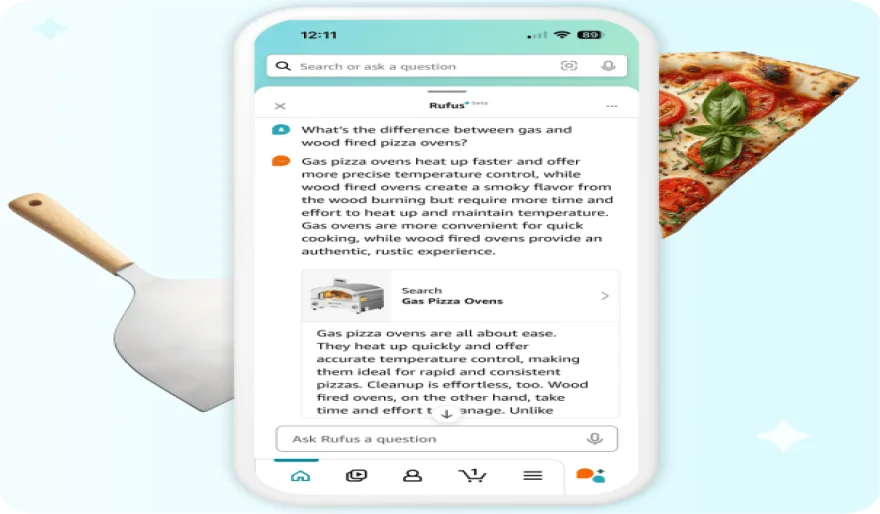Stay Ahead of the Curve
Latest AI news, expert analysis, bold opinions, and key trends — delivered to your inbox.
Amazon Begins Testing Ads in Its Rufus Chatbot
3 min read Amazon is expanding the capabilities of its Rufus chatbot by introducing ads. This move aims to generate additional revenue for the company while providing users with relevant product recommendations. September 12, 2024 06:13
Amazon is expanding the capabilities of its Rufus chatbot by introducing ads. This move aims to generate additional revenue for the company while providing users with relevant product recommendations.
Rufus will display ads that are tailored to the user's conversation history and search queries. For example, if a user asks about buying a new laptop, Rufus might suggest products from Amazon's marketplace. Amazon is committed to ensuring that ads are integrated into the chatbot experience in a way that doesn't disrupt the conversation flow.
The introduction of ads into Rufus could have several benefits for Amazon. First, it can be a significant source of income for the company, especially as the chatbot becomes more popular. Second, by tailoring ads to user preferences, Amazon can provide more relevant product recommendations, potentially increasing sales. Finally, the revenue generated from ads can be used to further develop and improve Rufus' capabilities, such as adding new features or expanding its knowledge base.
However, there are also potential concerns and challenges associated with introducing ads into Rufus. Some users may find ads intrusive or disruptive to their conversation with the chatbot. Additionally, there are concerns about the potential for targeted advertising to be used to manipulate or exploit users. Finally, Amazon will need to compete with other tech giants, such as Google and Apple, who are also exploring ways to integrate ads into their AI-powered chatbots.
Overall, Amazon's decision to introduce ads into Rufus is a strategic move that could have a significant impact on the future of AI-powered chatbots. As the technology continues to evolve, it will be interesting to see how companies balance the need for revenue with the desire to provide a positive user experience.



















 AI Agents
AI Agents